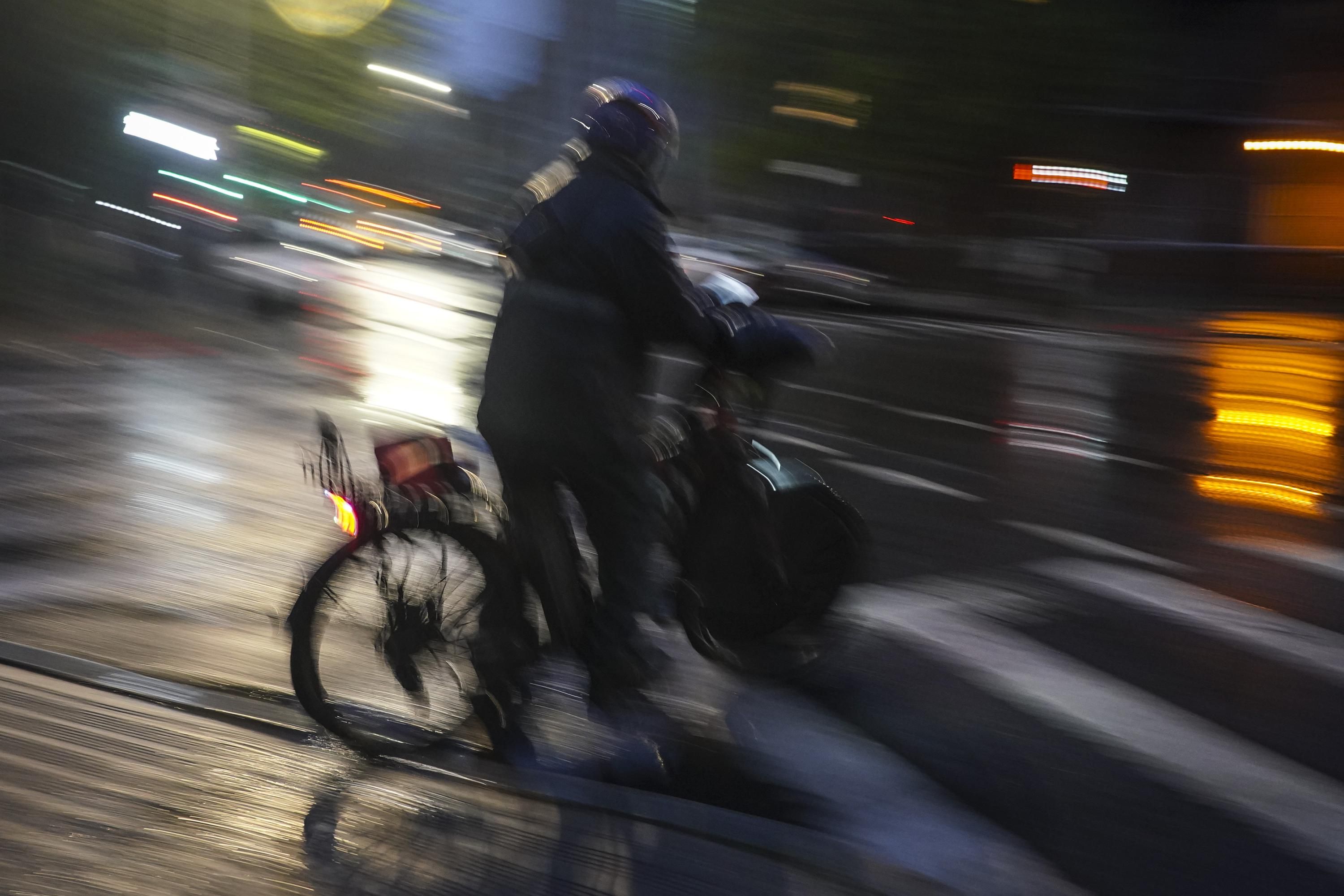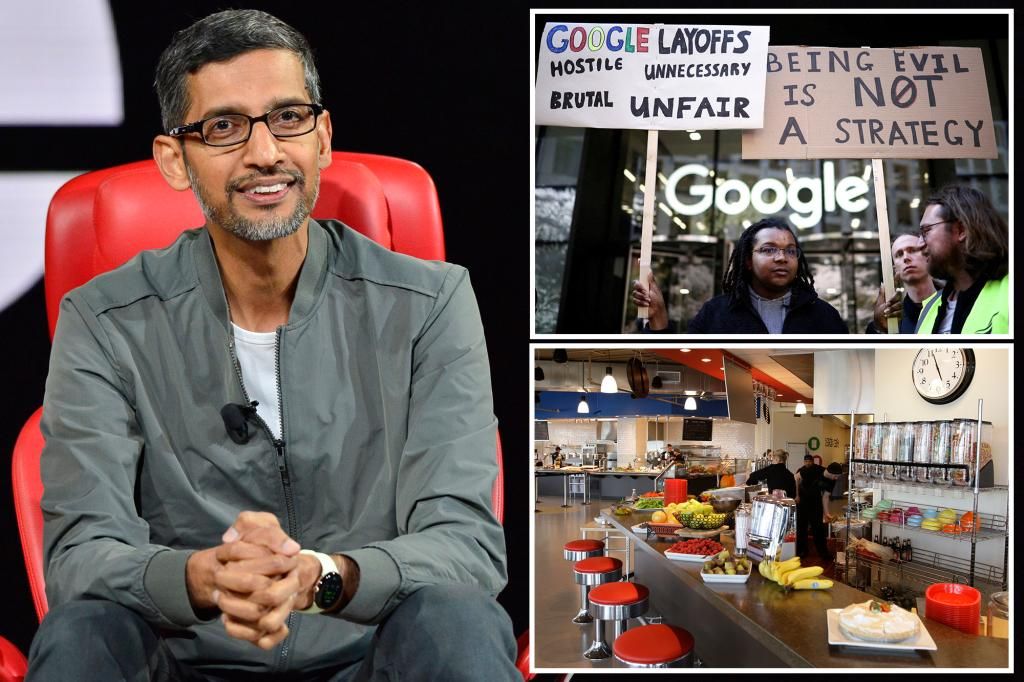Attacks on delivery drivers add fears among gig workers
A food delivery worker rides in the night along Brooklyn's Bedford Avenue, Friday, April 28, 2023, in New York. Attacks which occurred in Florida last month sent ripples of fear among some app-based delivery workers, who have long demanded better protection from companies whose safety policies they say are bettered geared toward customers than workers. (AP Photo/Bebeto Matthews)
A food delivery worker rides in the night along Brooklyn's Bedford Avenue, Friday, April 28, 2023, in New York. Attacks which occurred in Florida last month sent ripples of fear among some app-based delivery workers, who have long demanded better protection from companies whose safety policies they say are bettered geared toward customers than workers. (AP Photo/Bebeto Matthews)
NEW YORK (AP) — A homeowner fired shots at a couple’s car when they mistakenly turned onto his property while making an Instacart delivery. A Florida man was charged with killing and dismembering an Uber Eats delivery driver who brought food to his home. A woman was kidnapped and sexually assaulted while making a DoorDash delivery to a hotel.
Ride-hailing and food delivery companies say such violent episodes are exceedingly rare among the millions of trips completed each week, and point to numerous safety measures they have taken over the years.
But the three attacks, which occurred within days of each other in Florida last month, sent new ripples of fear among some app-based drivers, who say company safety policies are still better geared toward customers than workers.
Winifred Kinanda, who sometimes drives for Instacart in the San Francisco Bay Area, said she had never felt unsafe making deliveries for the grocery app until she heard about the Florida couple. That day, she got an Instacart order and constantly checked to make sure she had the right address, saying she felt particularly vulnerable as a person of color.
“It got me scared,” said Kinanda, an immigrant from Kenya who also drives for Uber and Lyft to supplement her income as an elder caregiver. “At the end of the day, being Black is really hard. People see us and think we are doing something wrong.”
A Pew Research Center poll in 2021 found that 16% of people in the U.S. had earned money from an online gig platform. That poll found that 35% of them have felt unsafe while doing those jobs, including 19% who said they had experienced unwanted sexual advances.
Ride-hailing and delivery driving are among the deadliest occupations in the country, according to occupational fatalities and injury data from the Bureau of Labor Statistics, which includes delivery workers for companies like Instacart and DoorDash in its “driver/sales” category and Uber and Lyft drivers in its “taxi” category. While most deaths and injuries are from traffic accidents, the data also shows drivers are more at risk of assaults than other occupations.
The activist group Gig Workers Rising said on-the-job deaths and injuries among gig workers are almost certainly undercounted because the companies are not obligated to report such incidents to government agencies for workers who are not direct employees. The group also said that other sources, such as police reports, may not note that a gig driver was working when they were killed.
In a report released Monday, Gig Workers Rising said its own research found that 80 app-based workers have been victims of homicides while on job between 2017 and 2022. The majority were ride-hailing drivers, but at least 20 delivery workers were also killed, according to the report, which relied on press accounts, court records and police reports.
More difficult to quantify are threats that gig drivers encounter frequently but rarely make headlines, including traffic accidents, robberies, carjackings and harassment. While Uber and Lyft have released safety reports that includes some of that data, the major food delivery apps do not, and Uber does not do so for Uber Eats trips.
Roberto Moreno, 48, stopped working as both a ride-hailing and food deliver driver in San Diego County at the beginning of this year because of safety concerns.
Moreno said he joined a WhatsApp group with other Latino gig drivers to support each other while they were on the job, from helping each other with flat tires to activating geolocation during shifts for safety.
“We have to look out for ourselves because the companies don’t do it,” said Moreno, who worked for Grubhub and Postmates, which was bought out by Uber Eats in 2020 , as well as Lyft and Uber.
Drivers also complain they can’t be sure who is getting into their cars because it’s too easy for riders to use fake names, nicknames or order rides for other people.
The companies have drivers take “a selfie, do background checks on us (and) collect all of our personal information” said Moreno, who belongs to a driver-led union called Rideshare Drivers United. “But we don’t know anything about the passengers or the people who we’re delivering to.”
In response to those concerns, Uber said it started an audit last fall of rider accounts and began freezing those with obviously fake names. The company also has an extra layer of verification for users who use anonymous forms of payment such as prepaid cards.
“We have heard loud and clear from drivers that they want more information about who they are picking up,” Uber said in a statement.
Critics also say gig workers are more vulnerable because as contract workers, they often don’t have the right to benefits such as worker compensation or health insurance. DoorDash and Instacart both provide free automatic insurance for on-the job injuries or deaths, while Uber and Lyft offer drivers insurance policies for accidents.
DoorDash, Grubhub, Instacart, Uber and Lyft have added safety features to their apps over the years, including emergency buttons that allow people to silently connect with emergency services or private security, and GPS-sharing features that allow friends or family to track rides.
DoorDash last fall introduced new technology to automatically check in on a worker if a delivery is taking longer than expected, while Grubhub is rolling out a new feature this year that will send ID and location data to emergency responders if workers call 911 via the app.
Gig worker advocates say they want deeper changes, arguing erratic pay and fear of being deactivated from the platform pressures workers into accepting risky jobs or continue driving with belligerent riders.
The Chicago Gig Alliance, for instance, is campaigning for a local ordinance that would require companies to conduct passenger verification, give notice before suspending drivers, and allow them to appeal such decisions.
Kinanda said she feels safer making deliveries than giving rides. She said she appreciates an Uber policy that allows her to cancel trips for safety reasons with no penalty, but erratic pay sometimes forces to her working into the night, which she tries to avoid because of drunken passengers.
But other gig workers say they prefer ride-hailing because delivery comes with more daily nuisances and danger.
Sedeq Alshujaa, 29, said he stopped doing food delivery three years ago and sticks to ride-hailing.
He said delivery workers are often sent to neighborhoods they don’t know and get suspicious looks while trying to find the right door. “People don’t know why you’re there,” said Alshujaa, who spoke in Arabic through a translator from the Service Employees International Union.
Once, a dog tried to bite him when he opened a gate. Another time, he had to deliver a pizza during a protest in Oakland. He called the customer and asked them if they could meet at his car, but they refused to leave their building. He left the pizza at the building’s front door and notified the customer, who reported not receiving the order. The cost of the food was deducted from his earning.
“The driver is always the one who takes the blame and loses,” Alshujaa said.
Source: The Associated Press


